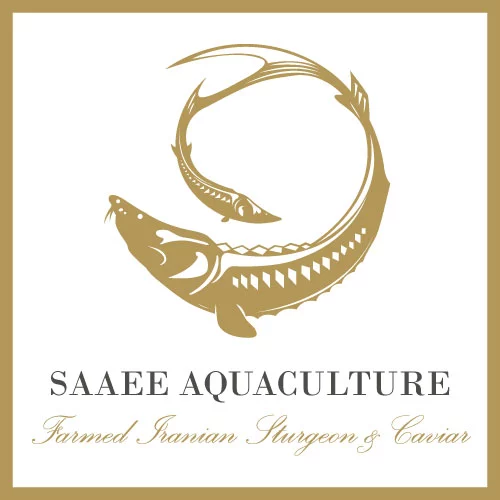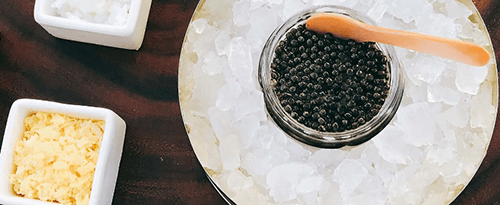
Sturgeon egg:
The eggs in sturgeon fish are slightly elongated and oval in shape. If the eggs from the ovaries of salmon and carp are round and spherical. The yolk is covered by a semi-shaft thin membrane called the yolk sac, which is inside There is semi-fluid yolk. This liquid is a colloidal protein substance in which some fat droplets are suspended. And the embryonic nucleus is inside this liquid near the wall of the yolk sac.

Sturgeons, from the family of Acipenseraide, are among rare aquatic species that are hundreds of millions of years old dating back to the Jurassic era, and therefore sturgeons are called the living fossils of the world that have survived to this day along with the evolution of phylogeny. These fish are divided into 27 species and subspecies in the world, of which 6 species live in the Caspian Sea. The value of sturgeon is not due to the use of their meat, but because of their eggs, which are known as caviar or black pearls. There are different types of caviar such as golden, red and black caviar, of course black caviar has a significant value.
The Caspian Sea alone contains 93% of the world's stock of caviar and sturgeon fish. Also, 5 species of the world's best sturgeon live in this sea, which in order of quality are "Beluga ", "Qarabron or persicuse sturgeon", "Gold sturgeon (Chalbash) or Russian sturgeon", "chip sturgeon" and "sevruga sturgeon".
Exploitation:
It takes 12 to 15 and sometimes 16 years to produce caviar from one fish. Previously, they used to anesthetize the sturgeon with a rubber hammer so that they would be safe from the blows of its tail, and then they would empty the caviar and send its meat to the market. Today, using the caesarean section, the eggs are removed from the fish's stomach and some of it is left in the fish's stomach for repopulation, then the fish are kept in quarantine for 3 months in special pools, and after this period they are marked.
Properties of caviar:
Caviar is an energy-rich food. Mainly, the protein in caviar consists of amino acids arginine, isoleucine, lysine and methionine. The fat in caviar is also divided into two main categories, which are 25% cholesterol and 75% lecithin.
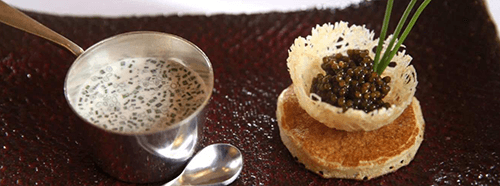
Consumption of caviar prevents depression and cardiovascular diseases, because the concentration of omega-3 fatty acids in caviar is very high. Caviar is also rich in a compound called "Ctacosand", which is a type of long-chain fatty alcohol that is converted to fatty acids in the body. These obtained fatty acids play a significant role in the synthesis of myelin (nerve cell covering). For this reason, consumption of caviar is very effective in the health of nerve cells.
In countries where fish and caviar have a special place in people's eating habits, the incidence of depression is much lower than in other countries. The presence of "Omega-3" fatty acids in caviar prevents the increase of blood cholesterol and, as a result, prevents cardiovascular diseases. In addition, consumption of caviar is very effective in preventing rheumatoid arthritis (joint inflammation), gastrointestinal diseases, and some types of cancer. Caviar is also rich in iron, and for this reason, it is recommended for people suffering from iron deficiency anemia. Consumption of caviar will be very effective for the health of the skin and hair, and its consumption will prevent skin aging due to the loss of collagen.

Using caviar, especially organic caviar that is free from toxins, chemicals and pesticides, in pregnant women increases the growth of the brain, eyes and intelligence of the fetus. Caviar is recommended to patients undergoing chemotherapy because it increases physical strength.

Caviar is highly perishable and should be refrigerated until consumption.
Pasteurized caviar has a slightly different texture. It is less perishable and may not require refrigeration before opening.
Pressed caviar consists of damaged or fragile eggs and can be a combination of several different types. Pressed caviar is specially refined, salted and pressed.
One spoonful of caviar provides an adult's daily requirement of vitamin B12, but it also contains a lot of cholesterol and salt. 1 tablespoon (16 grams) of caviar contains these nutrients.
How many categories is caviar divided into?
In Iran, there are different methods for extracting sturgeon eggs, which divides this tasty food item into two general categories:
Sea caviar (wild) and breeding
Following the catastrophic extinction of wild sturgeon fishes worldwide, today most of the produced caviar is raised in standardized and supervised environments. Normally, the difference between marine and cultured caviar is in its taste, which in this case is not significantly different from each other; However, a severe drop in quality has been observed in some types of farmed caviar. To solve this problem, Saaee Aquaculture(Abzigostaran Saaee) considers it necessary to provide you with your favorite caviar with the best processing quality.
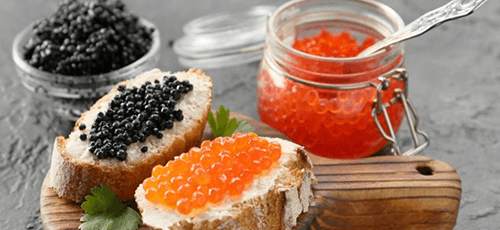
Different types of caviar:
For hundreds of years, sturgeon roe has been known as one of the most popular seafood products. At the beginning of the 1800s, fish eggs were collected and consumed from other species of fish, but none of them reached the level of today's caviar.
Finally, about 27 species of sturgeon were identified, almost all of which can be used for caviar extraction. But among them, the fish that we introduce below dominate the big world of this food item:
Beluga Caviar :
This large fish, which can reach 15 feet in length and weigh nearly 3,000 pounds, is native to the Caspian Sea. Beluga caviar is considered one of the most popular caviars in the world, which has a color ranging from gray to dark black and is also called "black caviar".
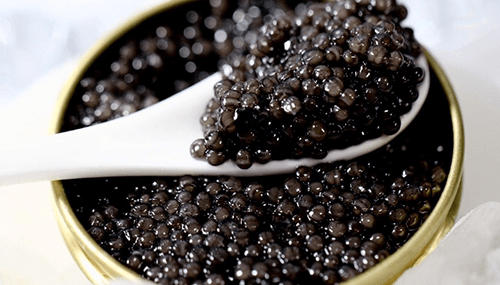
Astra caviar :
Astra sturgeon eggs are slightly smaller than beluga caviar and their color varies from brown to golden. The lighter the eggs, the older the fish and the more expensive Astra caviar.
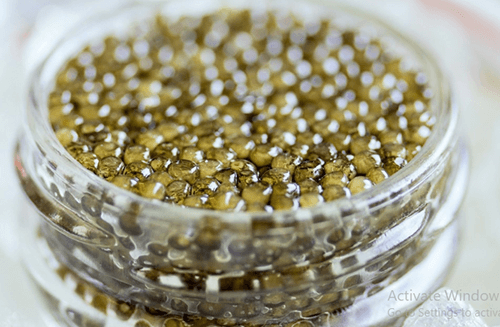
Sevruga caviar :
Suruga is also one of the types of Caspian sea sturgeon. Sevruga caviar is known as one of the most popular seafood products with its distinct and buttery taste.
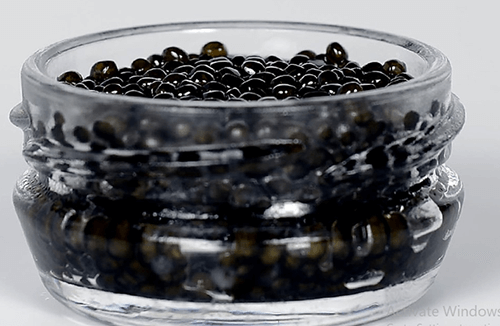
Kaluga Caviar :
Kaluga is a large, freshwater sturgeon that, according to many caviar enthusiasts, tastes exactly like Beluga caviar.
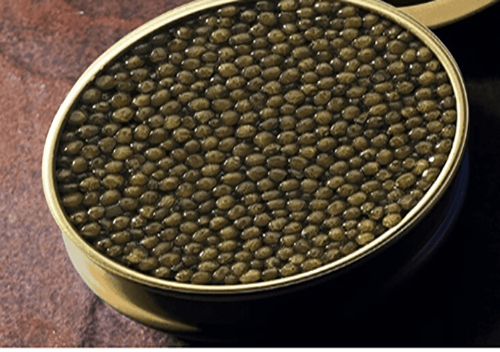
Which type of caviar has more properties and expensive?
In today's world, the different types of caviar available in the market are more widely available to all sections of the society with more affordable options.
Many fans of this food product identify beluga as the best caviar. This product, which is extracted from the Beluga sturgeon of the waters of the Caspian Sea, is known as the tastiest type of caviar in many cases.
In addition to its delicious taste, this product also has useful properties for improving the health of the human body:
rich in omega-3 fatty acids;
containing large amounts of selenium;
Excellent source of vitamin B12;
positive impact on mental health;
rich in vitamin D;
Rich in iron.
In general, the properties of different marine or farmed caviar are not much different from each other (provided that the sturgeon fish are raised in a suitable and standard environment and the important points for keeping caviar are observed).
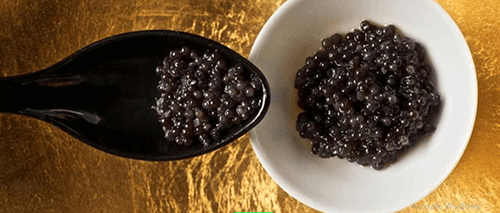
One of the reasons why caviar is cheap!!!
Store shelves are filled with various containers containing caviar, from large and small cans to plastic and glass containers at different prices, many of which, unfortunately, may not be natural caviar. The thirst for money among profiteers is so great that they have no qualms about filling small containers with various products that look, taste and smell like caviar. At present, the food industry is full of various additives that can be used to prepare fake products with an appearance similar to caviar; To such an extent that it is not possible for ordinary people to distinguish the difference between fake and original caviar.
These counterfeit products are neither fish eggs nor sturgeon caviar. Considering this fact, certainly no one wants to waste their money and buy a fake and harmful product instead of buying real caviar; Therefore, you should get to know the tricks of distinguishing real caviar from fake. In this article, we will discuss the difference between fake and original caviar and we will teach you how to recognize these two products; So stay with us until the end of this article.
What are the differences between real and fake caviar?
The main ingredient for producing fake caviar is seaweed. In this way, they boil the algae until it becomes jelly and looks like caviar seeds. These seeds are mixed with food colors and sturgeon fish fat or vegetable oil and give it the desired color and aroma. With a few tricks, you can tell the difference between real and fake caviar before buying:
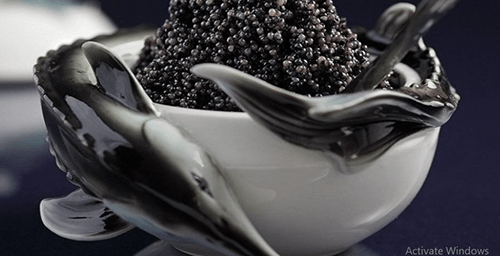
packing
Reliable and professional manufacturers consider the best packaging for their product with a unique and beautiful design. The best type of Iranian caviar is packed in cans weighing 30, 50, 100 and more, or glass containers. When buying caviar, you should make sure that its packaging is without protrusions or depressions and that the product must be sealed; Sealed caviar is one of the signs of the originality of the product.
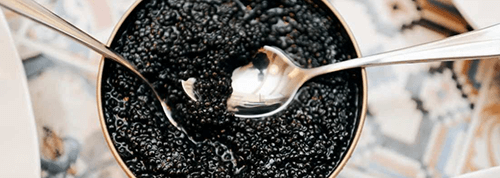
Low-quality or fake products are often sold in unsealed cans with unprofessional designs and writings in Russian; It has even been seen that some producers offer fake caviar in plastic containers. These containers are not at all suitable and hygienic for caviar, which spoils very quickly, and it is considered the first difference between fake and original caviar.
The quality of caviar seeds
Some manufacturers pack caviar in glass containers, which allows you to see the quality of the product better. In this case, the eggs should not stick together and there should not be any liquid in the bottom of the container. The presence of liquid at the bottom of the container indicates that the caviar is poorly packed. If the caviar is in a can, shake the container and listen to it. In this case, you should not hear any sound. If you distinctly hear the sound of liquid, you can be sure that this caviar is a low-quality product; Because the caviar should not float in the dish.
By examining the appearance of caviar seeds, after opening the can, it becomes easier to distinguish real caviar from fake caviar. The difference between fake and original caviar is that fake caviar seeds are stuck to the walls of the container, the size of the seeds is not uniform and you can see very small and very large seeds inside the container; Even the color of the product is completely artificial and may be too black. Keep in mind that the original caviar has seeds and a uniform and natural color.
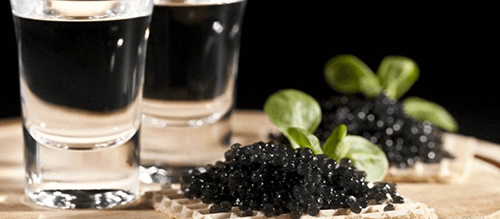
What are the methods of identifying real caviar?
How to know if caviar is real? Appearance is the first point to identify fake caviar from the original. On the original and liquid caviar inside the can, there is no plaque, and there should not be any visible lumps or its seeds are compressed.
To identify real caviar, put a few seeds of caviar in cold water. If it softens or dissolves, the caviar is fake and probably made from gelatin and algae. If the water becomes colored, it is possible that it is a non-caviar egg that has been dyed or even artificial caviar; Because caviar of all types of sturgeon fish does not lose its color and does not dissolve in water.
Real caviar does not have a distinct fishy smell; But it emits a delicate fragrance of the sea. If the caviar has a very strong fishy smell, it is most likely fake or spoiled. There are very few people who can tell the difference between real and fake caviar by smell. The taste of caviar is also very delicate, with nutty and creamy notes that sometimes have a little bitterness and saltiness. The presence of obvious bitterness is unacceptable and indicates harmful preservatives present in the product.
Too much salt is also a bad sign; Most likely, a lot of time has passed since such caviar was stored or it was not prepared and packaged in good conditions. Note that this type of caviar may not be fake; But too much salt is a sign of low product quality.
Put the caviar in your mouth. If the caviar is original, its seeds will easily burst in your mouth, and if it is fake, this will not happen because it does not have a shell; Rather like marmalade, it is crushed in your mouth

